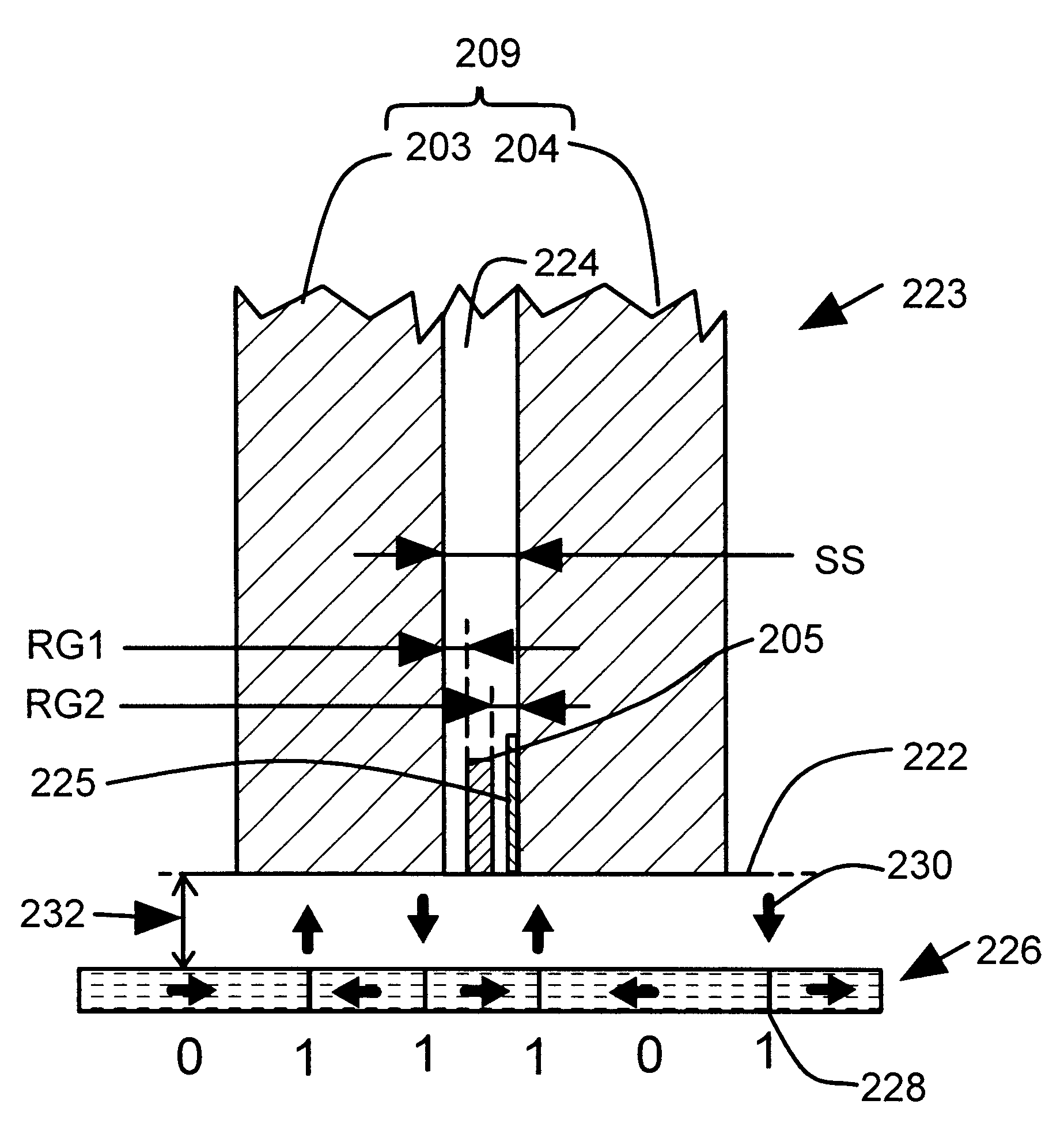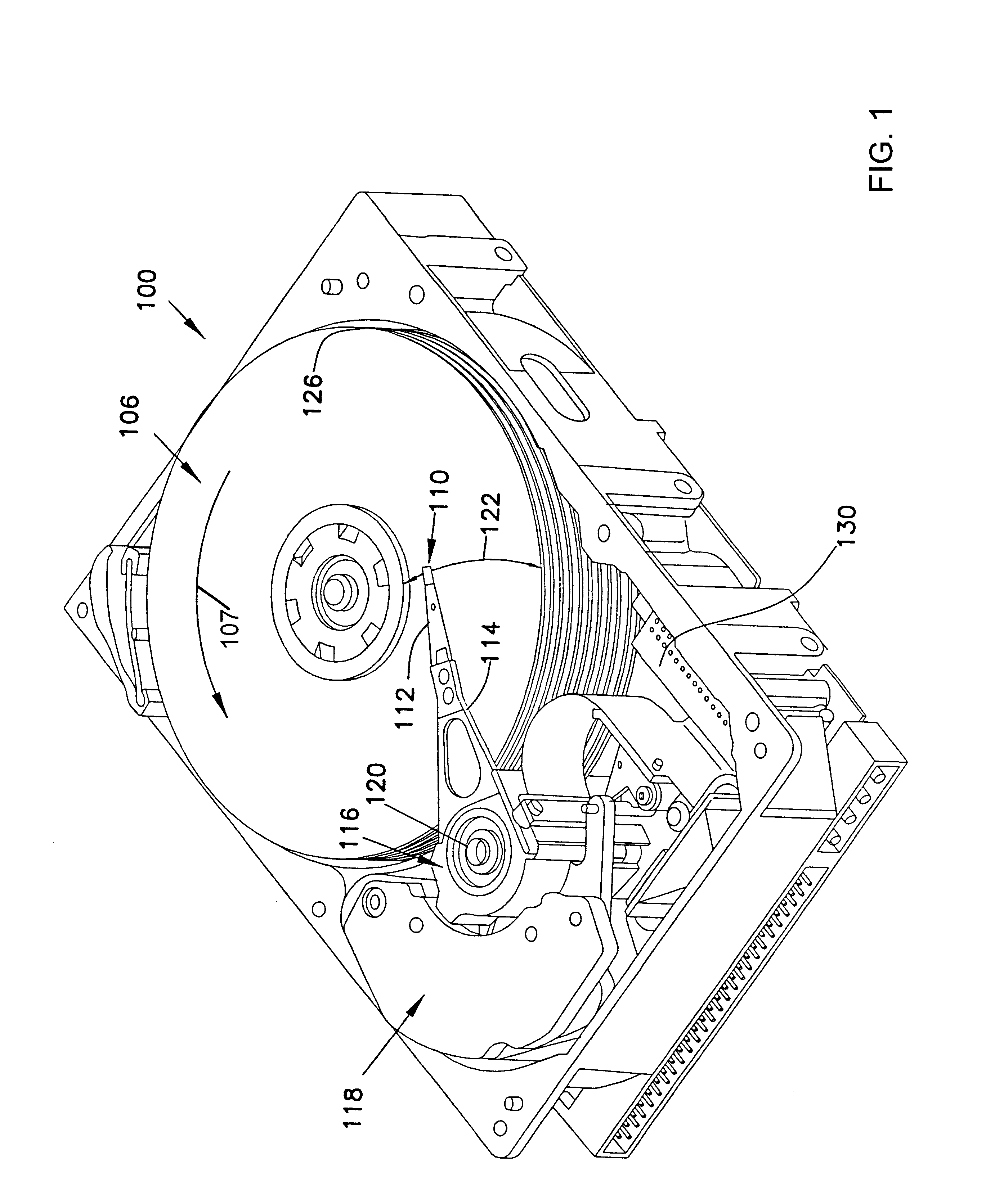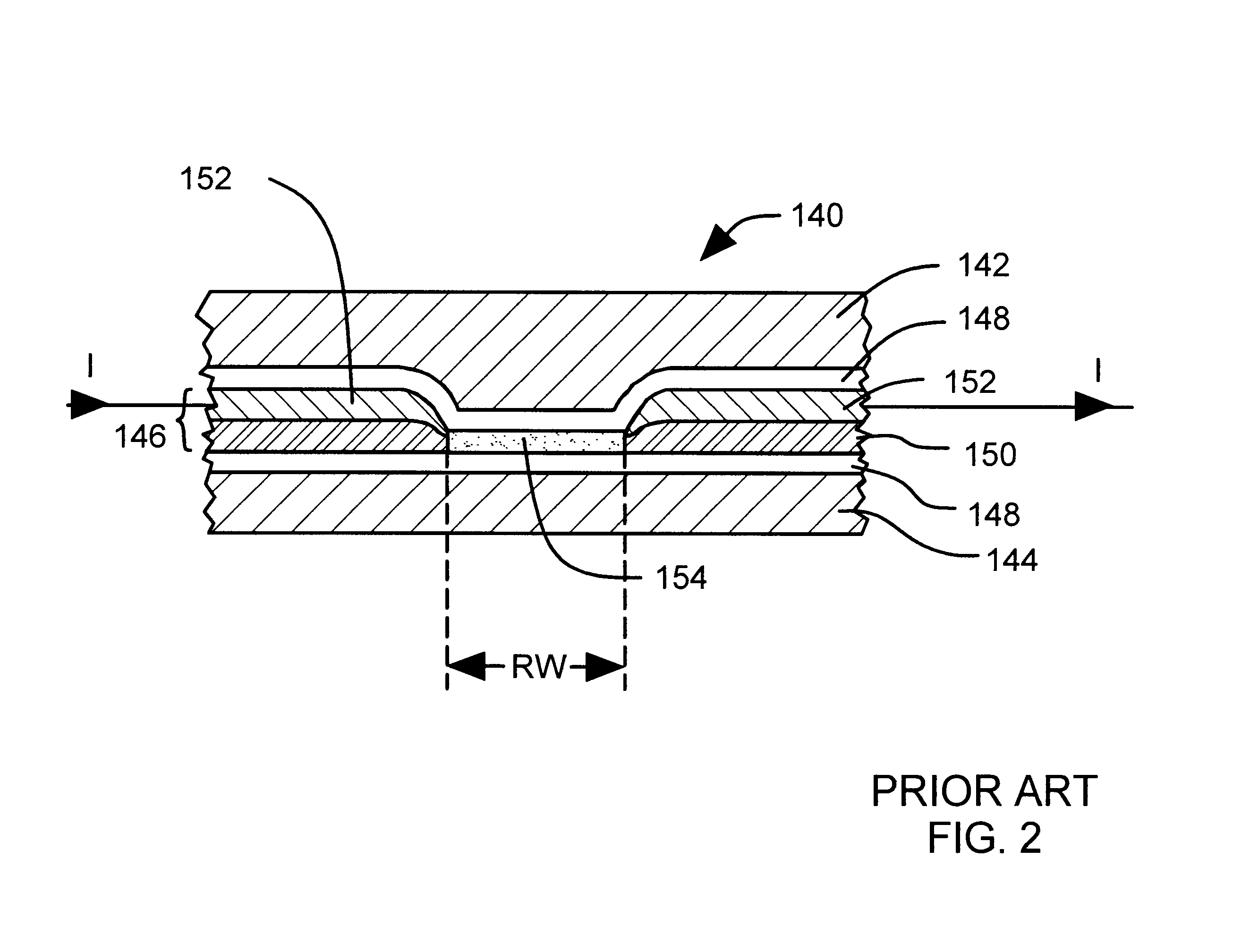Non-magnetic metallic layer in a reader gap of a disc drive
a technology of non-magnetic metallic layer and disc drive, which is applied in the direction of record information storage, manufacturing head surfaces, instruments, etc., can solve the problems of reducing thermal resistance of conducting non-magnetic layers and reaching the limit of type of reader redesign
- Summary
- Abstract
- Description
- Claims
- Application Information
AI Technical Summary
Benefits of technology
Problems solved by technology
Method used
Image
Examples
second embodiment
FIG. 7 illustrates an enlarged bottom view of a magnetoresistive read sensor 260 that includes a thermally conducting nonmagnetic layer 262 in a read gap. The arrangement illustrated in FIG. 7 is similar to the arrangement illustrated in FIG. 6 except that in FIG. 7 the nonmagnetic layer 262 is deposited on the bottom magnetic shield layer 203 instead of the shared magnetic shield layer 204. As illustrated in FIG. 7 at lines 264, there is an enhanced heat flow from the magnetoresistor 238 to the bottom magnetic shield layer 203 through the thermally conducting nonmagnetic layer 262.
third embodiment
FIG. 8 illustrates an enlarged bottom view of a magnetoresistive read sensor that includes a thermally conducting nonmagnetic layer in a read gap. The arrangement illustrated in FIG. 8 is similar to the arrangement illustrated in FIGS. 6-7 except that in FIG. 8 the nonmagnetic layer 262 is deposited on the bottom magnetic shield layer 203, and also the nonmagnetic layer 225 is deposited on the shared magnetic shield layer 204. In FIG. 8, each of the two insulating layers 224 is reduced in thickness to accommodate one of the nonmagnetic layers 225, 262. As illustrated in FIG. 8 at lines 264, 266, there is an enhanced heat flow from the magnetoresistor 238 to the bottom magnetic shield layer 203 through the first thermally conducting nonmagnetic layer 262, and there is also an enhanced heat flow form the magnetoresistor 238 to the shared magnetic shield layer 204 through the second thermally conducting nonmagnetic layer 225.
FIG. 9 illustrates a finite element analysis of peak and aver...
PUM
| Property | Measurement | Unit |
|---|---|---|
| thickness | aaaaa | aaaaa |
| thickness | aaaaa | aaaaa |
| size | aaaaa | aaaaa |
Abstract
Description
Claims
Application Information
 Login to View More
Login to View More - R&D
- Intellectual Property
- Life Sciences
- Materials
- Tech Scout
- Unparalleled Data Quality
- Higher Quality Content
- 60% Fewer Hallucinations
Browse by: Latest US Patents, China's latest patents, Technical Efficacy Thesaurus, Application Domain, Technology Topic, Popular Technical Reports.
© 2025 PatSnap. All rights reserved.Legal|Privacy policy|Modern Slavery Act Transparency Statement|Sitemap|About US| Contact US: help@patsnap.com



